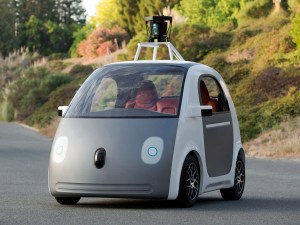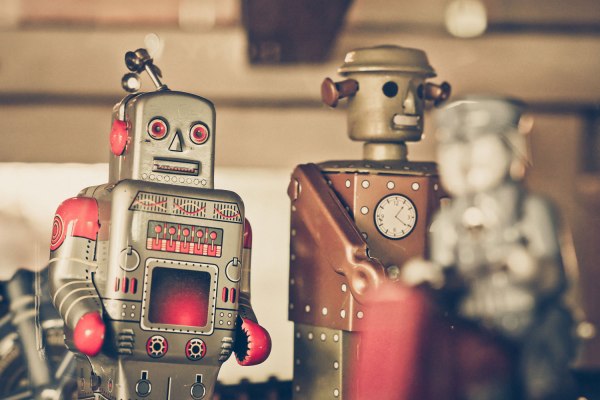We’ve already seen a number of predictions about technology innovations we can expect this year, But as 2015 actually marks the halfway point through the decade, let’s take a longer-term look at the breakthroughs we’ve seen in the first half of the 2010s, and what those may make possible in the second half.
In the last five years, we’ve seen a number of innovations move quickly along the adoption curve to become part of the fabric of our society. Big data emerged as a powerful tool fueled by intelligent computing such as IBM’s Watson computer. Under the watchful eye of data scientist Nate Silver, big data was used to accurately predict the outcomes of our last federal election with unstructured information.
The insight possible with big data processing will be a common element across many of the breakthroughs we will see in the second half of the decade.
Big Data and IoT Evolve Into Automated Information Sharing
Big data and the Internet of Things (IoT) are now in various stages of adoption. Beyond inventory-tracking refrigerators, intelligent connectivity has even made many people passionate about an otherwise mundane household gadget – the Nest thermostat.
As IT infrastructure becomes more agile, we can expect to see the emergence of a new category that blends big data and the Internet of Things: information sharing. Of course, privacy and security issues will need to be addressed, but given the significant potential impact on society, the benefits of information sharing will likely attract many of us to these services.
Amidst increasing climate challenges, imagine if all gas and oil companies and all-weather stations were able to analyze their combined data on plate movement in real-time to provide earthquake and tsunami warnings for those who live on coastlines around the world.
As another example, with the emergence of new diseases that resist existing treatments, information sharing could leverage big data from wearable devices to help identify the outbreak of a communicable illness by tracking body temperatures and geolocation in real time.
Services like these could provide life-saving information, but they will also require breakthroughs in data security and privacy protection to come to fruition.
Self-Driving Vehicles Become Mainstream

Google’s driverless car
Our cities are congested with traffic that makes commuting a nightmare, but without expansive subway systems in most urban centers, many of us are not keen on public transit for a number of reasons. From automated lane assistance to adaptive cruise control to parallel parking, today’s cars are already equipped with new features that automate parts of our commute.
These technologies will continue to advance, and when the in-car CAN bus (or Controller Area Network) is centrally connected to public and only line service systems, it will become possible for our vehicles to operate autonomously and select routes optimized in real-time to help us all avoid gridlock. Cities will be incentivized to embrace these innovations in order to keep our infrastructure functioning effectively as people continue to migrate to metropolitan areas.
The Appearance of Artificial Intelligent Assistants
Ushered in by the often controversial Google Glass and now ubiquitous fitness trackers, wearable devices are now gathering information on everything from our heart rates to blood sugar levels. From Siri to Cortana, the majority of smartphone users also now have easy access to digital assistants, frustrating as they can sometimes be at these early stages.
data virtualization will help today’s data systems become more efficient in order to provide the information that will be required by the services of tomorrow.
Combined with big data, wearables and digital assistants are two innovations that provide a gateway to new breakthroughs. Before artificial intelligence becomes a potential threat to humans as Professor Stephen Hawking recently warned, this branch of AI assistance will help simplify our lives. As our devices learn about us, they become more useful with less manual direction from the user. Over time, as the power of high-performance computing continues to miniaturize, this branch of innovation will eventually lead to adaptive AI that at least appears to learn on its own as it collects more information and processes what is valuable to provide to humans.
Our artificial assistants will become much more useful to us as they are embedded in autonomous robots. Amazon is already using robots to quickly move heavy loads of goods at its warehouses around the country. As our AI assistants take on physical forms – perhaps soon a new product category for consumer product innovators like Apple – we will see more robots not only in our factories, but also in our daily lives.
One day our AI assistants could pick up our dry cleaning overnight by connecting with our self-driving cars and using automated pickup services at the cleaners.
Real-Time Agility Through Data Virtualization
There is a cost associated with providing the data required for each of these new innovations. Some of those costs will be covered by consumers, but often the vendor will be expected to absorb the expense as part of doing business.
IT infrastructure will have to evolve to quickly deliver the data these systems need, while minimizing the cost of storing non-essential data, which is the equivalent of digital noise created by our connected world. To enable these data-driven opportunities, data itself must become mobile within datacenter infrastructure using data virtualization.
Data virtualization will give applications, servers and clients the awareness and capability required to easily migrate data between IT resources to deliver unprecedented performance and efficiency as our data needs evolve. That means that while self-driving cars are sharing data during the commute, data moves quickly between vehicles. Once rush hour ends, that data can be moved off that powerful resource so that another service can use that high-performance system.
As we look ahead, data virtualization will help today’s data systems become more efficient in order to provide the information that will be required by the services of tomorrow.
